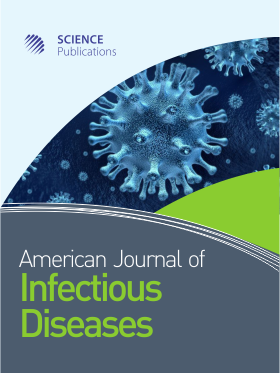Design, Synthesis, Biological Screening and Structure Activity Relationship Study of 4, 6-Dimethyl-2-(Substituted) Mercapto-3-(Substituted) Pyridines as Anti Tubercular Agents
- 1 Charotar University of Science and Technology, India
- 2 Gujarat University, India
Abstract
Problem statement: Tuberculosis is a leading global mortality factor which has not been effectively controlled, with 1.7 million deaths per year and 8.9 million new cases. Aerobic microbe Mycobacterium tuberculosis H37Rv (MTB) is the causative agent of tuberculosis. Although many active antitubercular agents have since been developed, drug resistance will continue to be a problem. Therefore, there is a clear need for the discovery of new derivatives with antitubercular activity for the management of tuberculosis. It was observed from the literature that pyridine nucleus have significant antitubercular activity. On the basis of that we have synthesized some new derivatives of pyridines and investigated their antimycobacterial properties. Approach: Two series of 3-cyano-4, 6-dimethyl-2-(Alkyl/Aryllthio) pyridine and 4, 6-dimethyl-2-(Alkyl/Aryllthio) nicotinamide have been designed and synthesized from malanonitrile. The title compounds were evaluated at 12.5, 25 and 100 μg mL-1 concentrations for their anti tubercular activity against Mycobacterium tuberculosis H37 Rv using Lowenstein Jensen method (proportion method). Results: Many of the synthesized compounds exhibit significant anti tubercular activity in comparison to Isoniazide while other compounds have shown promising ant tubercular activity. All the synthesized compounds screened for antimycobacterial activity were found significantly active against M. tuberculosis at the concentration 12.5 μg mL-1. Conclusion: The antituberculosis screening data revealed that all the tested compounds 3a-3d and 4a-4d showed moderate to very good inhibitory activity. The compounds 4a-4d showed very good antituberculosis activity. The good activity is attributed to the presence of substituted alkyl group at position-2 and amide group at position-3 of pyridine ring. Structure Activity Relationship (SAR) study reveals that with the increase in the chain length of alkyl group at position-2 has tremendously increased the activity of the title molecules.
DOI: https://doi.org/10.3844/ajidsp.2011.61.66

- 5,975 Views
- 4,169 Downloads
- 1 Citations
Download
Keywords
- Substituted pyridines
- lowenstein jensen method
- antitubercular activity
- synthesized compounds
- Mycobacterium tuberculosis
- Acid Fast Bacillus (AFB)
